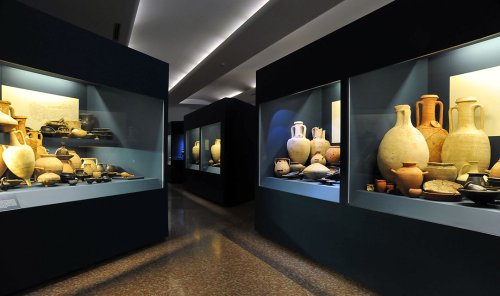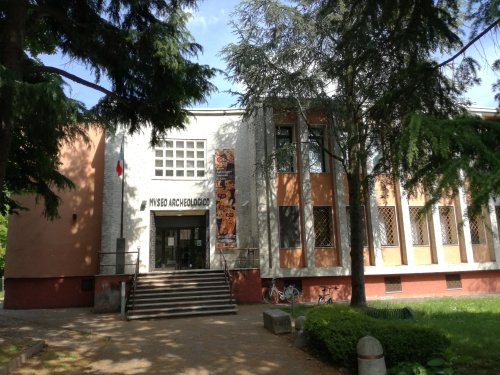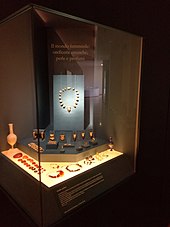Museo Archeologico Nazionale di Adria
Located in the area of the Po Delta, Adria was the town that imposed its name to the Adriatic Sea. Already in the sixth century a. C. served as a port of access to the Po Valley for Greeks and Etruscans, who here came into contact with the local Celto-Venetian population. But today arriving in Adria there are two colors that stand out on the landscape: the blue of the canals and rii and the green of the fertile fields. In the middle, a small charming town whose symbol are the beautiful and picturesque river banks, ideal background for quiet walks accompanied by the slow flow of water.
The center develops around Piazza Garibaldi also called Piazza "Castello", on which overlook the old Cathedral, Palazzo dell'Orologio, built on the old town hall, and other historic buildings. While the new Cathedral dedicated to Saints Peter and Paul contains a striking reproduction of the Grotto of Lourdes.
The history of Adria can be read by visiting the premises of the National Archaeological Museum, which exhibits historical finds - instruments and ceramics - of the Iron Age.
The museum was inaugurated in 1961 and contains finds from the collection of the Bocchi family and from the archaeological sites of pre-Roman and Roman times discovered around the city.
Where is the National Archaeological Museum?
It is located in Adria (RO), in Via G. Badini, 59, 4501
When is it open?
Opening hours: Monday closed
Tuesday, Thursday, Saturday, Sunday 14:30-19:30
Wednesday, Friday 08:30-13:30
How is the museum structured and what can you see?
The museum is divided into 11 sections:
-Etruscan Adria and its territory from birth to the characteristics of the town.
-burials of the Archaic and Classical ages, between the 6th and 4th centuries B.C.
-Adria in the third century B.C.; the changes in daily life
-the burials of the third century B.C. (the tomb of the chariot)
-Adria and its territory during the Romanization period (from the second to the first century B.C.), testimonies from the town and from the burials
-Adria in the imperial age: the development of the city
-the necropolis of the imperial age
-the lapidary
-the territory: Corte Cavanella di Loreo and San Basilio di Ariano in Polesine
-Adria between Tardoantico and the Middle Ages and the research work of the Bocchi family in Adria.
https://polomusealeveneto.beniculturali.it/musei/museo-archeologico-nazionale-di-adria/informazioni-e-orari
Experience a unique holiday
A journey through the territory of the Seven Lidi of Comacchio.


